 Search by Keyword
|
"BECAUSE"
(John Lennon – Paul McCartney)
The songwriting team of "Lennon / McCartney" has arguably become the most prolific compositional partnership in the history of popular music. Therefore, although many early compositions were written entirely by either John (such as "One After 909") or Paul (such as "Like Dreamers Do"), it was agreed that these songs would be credited as written by both of them when published and then released.
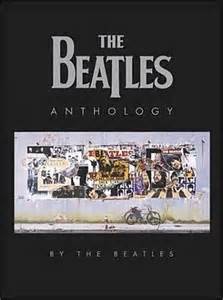 "Crediting the songs jointly to Lennon and McCartney was a decision we made very early on,” Paul relates in the “Beatles Anthology” book, “because we aspired to be Rodgers and Hammerstein. The only thing we knew about songwriting was that it was done by people like them, and Lerner of Loewe. We'd heard these names and associated songwriting with them, so the two-name combination sounded interesting.” "Crediting the songs jointly to Lennon and McCartney was a decision we made very early on,” Paul relates in the “Beatles Anthology” book, “because we aspired to be Rodgers and Hammerstein. The only thing we knew about songwriting was that it was done by people like them, and Lerner of Loewe. We'd heard these names and associated songwriting with them, so the two-name combination sounded interesting.”
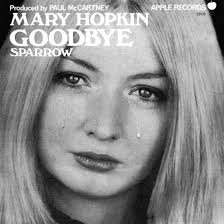 While they did indeed jointly write a good portion of the 179 songs credited under the “Lennon / McCartney” umbrella, they later reverted to writing them separately and crediting them to the team. As late as 1969, this was the case even when the songs weren't used within the confines of The Beatles, such as the Plastic Ono Band's “Give Peace A Chance” and Mary Hopkin's McCartney penned hit “Goodbye.” While they did indeed jointly write a good portion of the 179 songs credited under the “Lennon / McCartney” umbrella, they later reverted to writing them separately and crediting them to the team. As late as 1969, this was the case even when the songs weren't used within the confines of The Beatles, such as the Plastic Ono Band's “Give Peace A Chance” and Mary Hopkin's McCartney penned hit “Goodbye.”
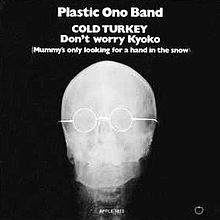 This brings us to the very last entry into the “Lennon / McCartney” catalog. During the recording of their final album “Abbey Road,” John brought in one last contribution for inclusion on the album, the beautiful “Because.” Shortly thereafter, in September of 1969, he announced that he wanted “a divorce” from The Beatles, thereby officially severing the “Lennon / McCartney” partnership. Even though the band's breakup was kept hidden from the public eye until April 10th, 1970, the songwriting partnership was dissolved. Subsequent compositions by either songwriter that were released after September of 1969, such as Badfinger's “Come And Get It” and The Plastic Ono Band's “Cold Turkey,” were credited solely to either “McCartney” or “Lennon.” This brings us to the very last entry into the “Lennon / McCartney” catalog. During the recording of their final album “Abbey Road,” John brought in one last contribution for inclusion on the album, the beautiful “Because.” Shortly thereafter, in September of 1969, he announced that he wanted “a divorce” from The Beatles, thereby officially severing the “Lennon / McCartney” partnership. Even though the band's breakup was kept hidden from the public eye until April 10th, 1970, the songwriting partnership was dissolved. Subsequent compositions by either songwriter that were released after September of 1969, such as Badfinger's “Come And Get It” and The Plastic Ono Band's “Cold Turkey,” were credited solely to either “McCartney” or “Lennon.”
And so ended an amazing era in popular music.
Songwriting History
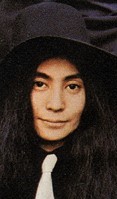 "Did you know that Yoko's trained as a classical musician?" asked Lennon during an interview. "In college she majored in classical composition." In an article appearing in the May 3rd, 1969 New Musical Express, undoubtedly from an April interview, John stated: "I've just written a song called 'Beacause.' Yoko was playing some classical bit, and I said, 'Play that backwards.' Yoko and I stimulate each other like crazy." Lennon gave more details to the event in a radio interview from September of that year, saying, "I said give me them chords backwards and I wrote 'Because' on top of it. I don't know whether it was Beethoven or something." Then, in the background, Yoko voice is heard saying "Moonlight Sonata." "Did you know that Yoko's trained as a classical musician?" asked Lennon during an interview. "In college she majored in classical composition." In an article appearing in the May 3rd, 1969 New Musical Express, undoubtedly from an April interview, John stated: "I've just written a song called 'Beacause.' Yoko was playing some classical bit, and I said, 'Play that backwards.' Yoko and I stimulate each other like crazy." Lennon gave more details to the event in a radio interview from September of that year, saying, "I said give me them chords backwards and I wrote 'Because' on top of it. I don't know whether it was Beethoven or something." Then, in the background, Yoko voice is heard saying "Moonlight Sonata."
 In Paul McCartney's biography “Many Years From Now,” Barry Miles explains that “Yoko was a classically trained pianist but had stopped playing because her insensitive father had made fun of her small fingers and told her that her playing would never amount to anything. She went into musical composition but then focused on avant-garde art. Sometimes, however, she would play something for John.” In Paul McCartney's biography “Many Years From Now,” Barry Miles explains that “Yoko was a classically trained pianist but had stopped playing because her insensitive father had made fun of her small fingers and told her that her playing would never amount to anything. She went into musical composition but then focused on avant-garde art. Sometimes, however, she would play something for John.”
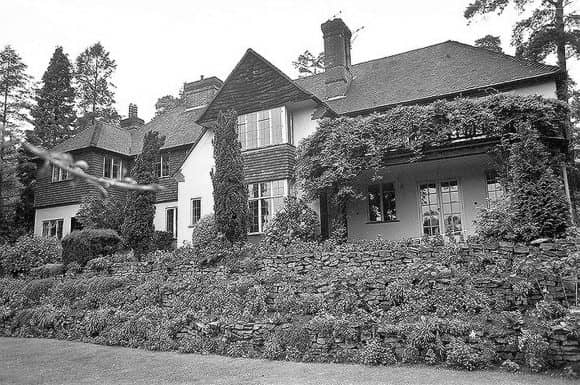 The song appears to have been written sometime in March of 1969, evidenced by the sound of John playing what unmistakably sounds like "Because" on acoustic guitar on the song "Amsterdam" (as Yoko sings "Stay in bed for bed-peace") as contained on John and Yoko's "Wedding Album," the track being recorded in late March of that year. "Because" was composed presumably while John and Yoko were enjoying some alone time at "Sunny Heights," Ringo's St. George's Hill estate in Weybridge. The drummer allowed the couple to reside there temporarily while waiting for renovations to be done on their recently purchased Tittenhurst Park home in Sunningdale, Ascot. “I was lying on the sofa," Lennon recalled in 1980, "listening to Yoko play Beethoven's 'Moonlight Sonata' on the piano. Suddenly I said, 'Can you play those chords backward?' She did, and I wrote 'Because' around them. The song sounds like 'Moonlight Sonata,' too.” The song appears to have been written sometime in March of 1969, evidenced by the sound of John playing what unmistakably sounds like "Because" on acoustic guitar on the song "Amsterdam" (as Yoko sings "Stay in bed for bed-peace") as contained on John and Yoko's "Wedding Album," the track being recorded in late March of that year. "Because" was composed presumably while John and Yoko were enjoying some alone time at "Sunny Heights," Ringo's St. George's Hill estate in Weybridge. The drummer allowed the couple to reside there temporarily while waiting for renovations to be done on their recently purchased Tittenhurst Park home in Sunningdale, Ascot. “I was lying on the sofa," Lennon recalled in 1980, "listening to Yoko play Beethoven's 'Moonlight Sonata' on the piano. Suddenly I said, 'Can you play those chords backward?' She did, and I wrote 'Because' around them. The song sounds like 'Moonlight Sonata,' too.”
 The piece that Yoko was playing actually turns out to be the Adagio sostenuto of Beethoven's Piano Sonata No. 14, Op. 27 No. 2 (Moonlight) in C sharp minor. Steve Turner, in his book “A Hard Day's Write,” explains that “the similarity between the opening of the 'Moonlight Sonata' and 'Because' is striking, although close scrutiny reveals it to be a straightforward lift rather than the reversal of notes John suggested.” Lennon's recent fascination with sounds being recorded backward, as well as his avant-garde leanings through Yoko's influence, led undoubtedly to his desire to attempt reversing these chords to continue his experiments in songwriting. “We'll probably write a lot more in the future,” he promised in 1969 when referring to this type of experimentation. The piece that Yoko was playing actually turns out to be the Adagio sostenuto of Beethoven's Piano Sonata No. 14, Op. 27 No. 2 (Moonlight) in C sharp minor. Steve Turner, in his book “A Hard Day's Write,” explains that “the similarity between the opening of the 'Moonlight Sonata' and 'Because' is striking, although close scrutiny reveals it to be a straightforward lift rather than the reversal of notes John suggested.” Lennon's recent fascination with sounds being recorded backward, as well as his avant-garde leanings through Yoko's influence, led undoubtedly to his desire to attempt reversing these chords to continue his experiments in songwriting. “We'll probably write a lot more in the future,” he promised in 1969 when referring to this type of experimentation.
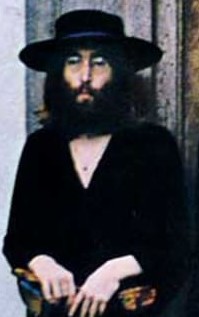 As for its words, John explained: “The lyrics are clear, no bullsh*t, no imagery, no obscure references.” Gone were the days of “tangerine trees and marmalade skies” and “semilina pichard climbing up the Eiffel Tower.” His determination was to write from his heart from this point forward, either poetically or in tribute to his love for Yoko. As for its words, John explained: “The lyrics are clear, no bullsh*t, no imagery, no obscure references.” Gone were the days of “tangerine trees and marmalade skies” and “semilina pichard climbing up the Eiffel Tower.” His determination was to write from his heart from this point forward, either poetically or in tribute to his love for Yoko.
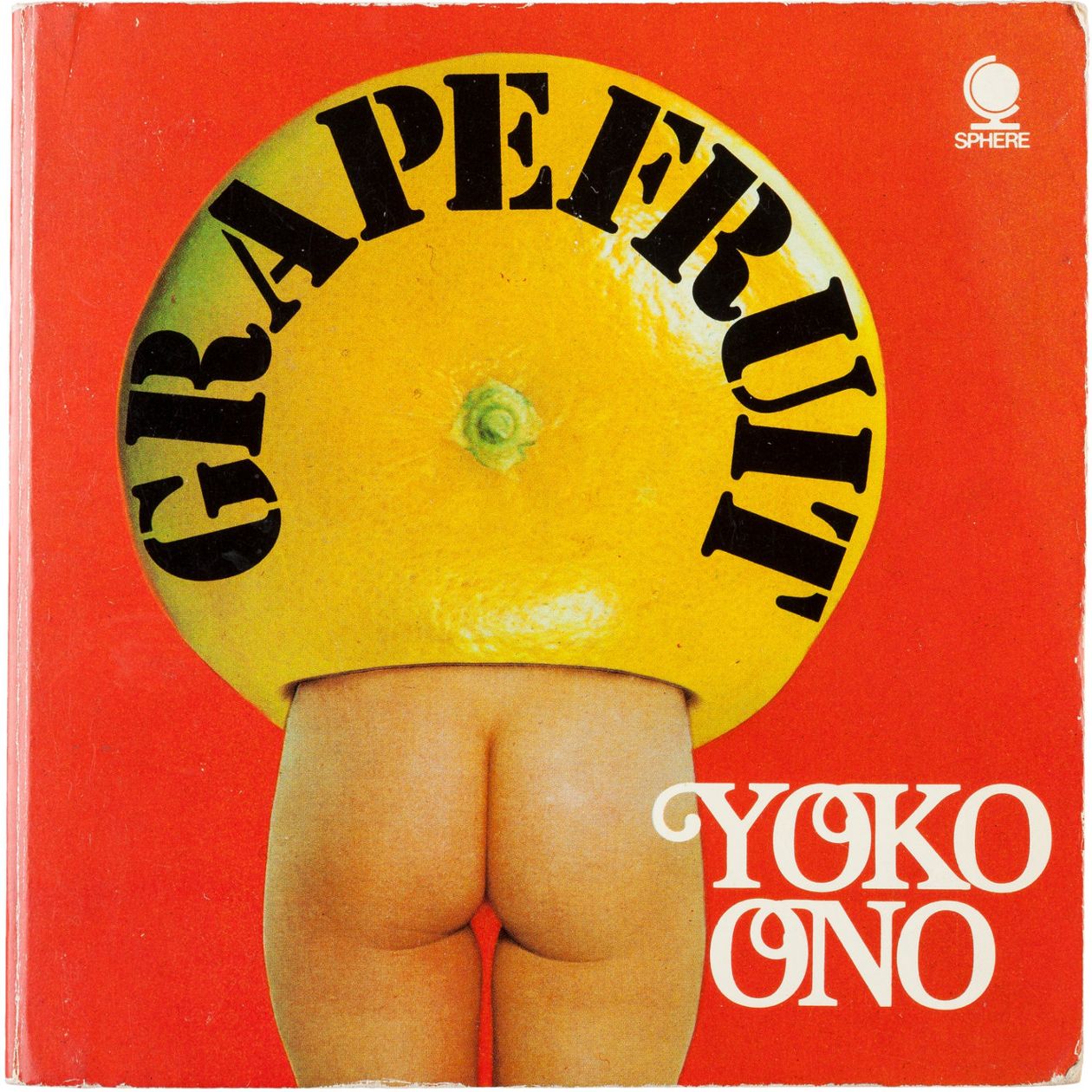 However, Paul suggests that his inspiration goes a little deeper than that on “Because.” In “Many Years From Now” he suggests: “I wouldn't mind betting Yoko was in on the writing of that, it's rather her kind of writing: wind, sky and earth are recurring. It's straight out of (Yoko's 1964 book of poems) 'Grapefruit' and John was heavily influenced by her at the time.” Interestingly, while the scandalous phrase “I'd love to turn you on” caused such controversy in 1967's “A Day In The Life,” the similarly phrased “Because the world is round it turns me on” hardly raised an eyebrow when it appeared in “Because” two years later. The times they were a changin'. However, Paul suggests that his inspiration goes a little deeper than that on “Because.” In “Many Years From Now” he suggests: “I wouldn't mind betting Yoko was in on the writing of that, it's rather her kind of writing: wind, sky and earth are recurring. It's straight out of (Yoko's 1964 book of poems) 'Grapefruit' and John was heavily influenced by her at the time.” Interestingly, while the scandalous phrase “I'd love to turn you on” caused such controversy in 1967's “A Day In The Life,” the similarly phrased “Because the world is round it turns me on” hardly raised an eyebrow when it appeared in “Because” two years later. The times they were a changin'.
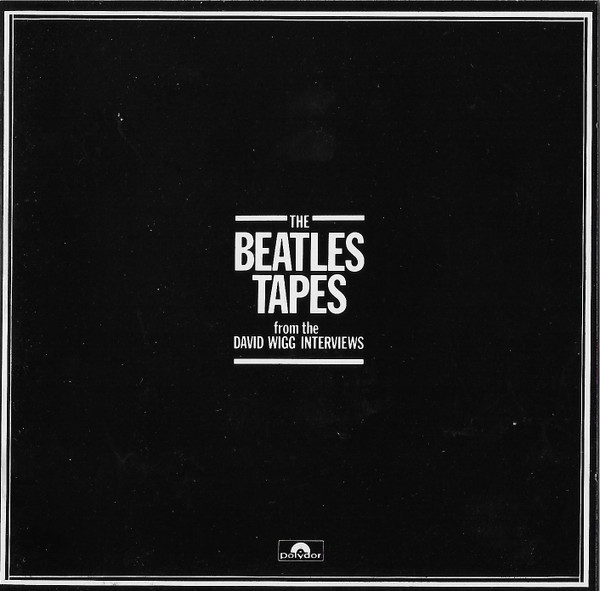 When interviewer David Wigg, as heard on the 1976 interview album "The Beatles Tapes," suggested to Paul in September of 1969 that Lennon's use of the phrases "turn me on" and "blow by mind" sounded "a bit passe, because they've been used so much in the past," McCartney replied: "If they had been used just straight; if it had been, 'You turn me on, you blow my mind,' that would have been passe. But to say that 'because the world is round it turns me on' and 'because the wind is high it blows my mind' is great. You know, it's much better than, 'You blow my mind, baby, honey bunch..'" When interviewer David Wigg, as heard on the 1976 interview album "The Beatles Tapes," suggested to Paul in September of 1969 that Lennon's use of the phrases "turn me on" and "blow by mind" sounded "a bit passe, because they've been used so much in the past," McCartney replied: "If they had been used just straight; if it had been, 'You turn me on, you blow my mind,' that would have been passe. But to say that 'because the world is round it turns me on' and 'because the wind is high it blows my mind' is great. You know, it's much better than, 'You blow my mind, baby, honey bunch..'"
Recording History
Presumably sometime in March of 1969, John recorded an acoustic guitar demo of his newly written song "Because," undoubtedly on a portable tape recorder due to his no longer owning his Kenwood home that had been equipped with a home recording studio. He subsequently lost this house due to his divorce with his first wife Cynthia earlier that same year. On this demo, interestingly, John strums his guitar instead of picking out the individual notes, and he sings "because the wind is low" instead of "high" as on the finished recording. It was also around this time that John recorded the unmistakable "Because" guitar picking that appeared on the track "Amsterdam" on the John and Yoko release "Wedding Album" mentioned above. This segment was recorded in a hotel room at the Hilton Hotel in Amsterdam, Holland sometime between March 25th and 31st, 1969.
 August 1st, 1969 was the day that Lennon first introduced the song to everyone in EMI Studio Two, the session beginning at 2:30 pm. Engineer Geoff Emerick, in his book "Here, There And Everywhere," remembers: "John had written the song on guitar, gently picking individual notes rather than playing chords, but he felt that something more was needed. 'Why don't I double your line exactly on harpsichord?' George (Martin) suggested, and Lennon quickly agreed. 'Yeah, great, that will help make it a little more classical-like too." August 1st, 1969 was the day that Lennon first introduced the song to everyone in EMI Studio Two, the session beginning at 2:30 pm. Engineer Geoff Emerick, in his book "Here, There And Everywhere," remembers: "John had written the song on guitar, gently picking individual notes rather than playing chords, but he felt that something more was needed. 'Why don't I double your line exactly on harpsichord?' George (Martin) suggested, and Lennon quickly agreed. 'Yeah, great, that will help make it a little more classical-like too."
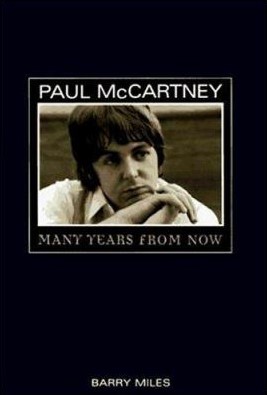 In an interview with Richard Buskin, George Martin explains that the backing track recorded on this day consisted of “John playing a riff on guitar, me duplicating every note on an electronic harpsichord, and Paul playing bass. Each note between the guitar and harpsichord had to be exactly together, and I'm not the world's greatest player in terms of timing; I would make more mistakes than John did." "I was tuned to your soul then," John was heard to remark during the session in reference to his and George Martin's cohesive performances on that day." "We didn't have drum machines in those days so Ringo was our drum machine,” George Martin explains, referring to Ringo counting off the takes and keeping the beat for them with soft hand claps. An interesting note here is that, according to Paul's book “Many Years From Now,” when EMI were reducing their instrument collection, “Paul was able to buy the electric spinet which gives much of the characteristic sound to the track. He still has it in his recording studio” as of 1997, when Paul's book was published. According to Kevin Howlett's notes in the 50th Anniversary "Abbey Road" book, this instrument was a Baldwin electric harpsichord. In an interview with Richard Buskin, George Martin explains that the backing track recorded on this day consisted of “John playing a riff on guitar, me duplicating every note on an electronic harpsichord, and Paul playing bass. Each note between the guitar and harpsichord had to be exactly together, and I'm not the world's greatest player in terms of timing; I would make more mistakes than John did." "I was tuned to your soul then," John was heard to remark during the session in reference to his and George Martin's cohesive performances on that day." "We didn't have drum machines in those days so Ringo was our drum machine,” George Martin explains, referring to Ringo counting off the takes and keeping the beat for them with soft hand claps. An interesting note here is that, according to Paul's book “Many Years From Now,” when EMI were reducing their instrument collection, “Paul was able to buy the electric spinet which gives much of the characteristic sound to the track. He still has it in his recording studio” as of 1997, when Paul's book was published. According to Kevin Howlett's notes in the 50th Anniversary "Abbey Road" book, this instrument was a Baldwin electric harpsichord.
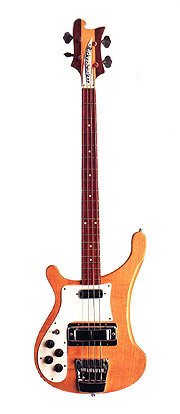 Geoff Emerick continues: “Ringo's job was to act as a timekeeper, a human click track; he was merely to tap out a steady tempo...for reference purposes only." It took them 23 takes to record the backing track on this day, only "take one," "take 16" and "take 23" making it all the way through the song. Paul's bass was on track one of the eight-track tape, John's guitar was on track two, George Martin's harpsichord was on track three, and Ringo's hand claps were on track four. "Take one," as featured in various 50th Anniversary "Abbey Road" editions, displays a very professional performance which could very well have been used for overdubs and, thereafter, the released version. After this take concludes, John clunks his guitar and exclaimes, 'I love it!" George Martin instructs Geoff Emerick in the control booth off microphone, "Geoff, could I have less harpsichord in my cans?" Ringo, who has a microphone, relates the request to the engineer: "Less harpsichord Geoff?" John then humorously adds, "Is my hair alight, Geoff?" which causes some laughter in the studio. After "take 18," John brainstormed what he wanted to add to the song as overdubs. "I just heard tamboura in it as well, just here and there," he exclaimed, referring to the Indian instrument that had been used on Beatles songs "Getting Better," "Lucy In The Sky With Diamonds," "Love You To" and "Within You Without You." This idea never came to fruition, however. Geoff Emerick continues: “Ringo's job was to act as a timekeeper, a human click track; he was merely to tap out a steady tempo...for reference purposes only." It took them 23 takes to record the backing track on this day, only "take one," "take 16" and "take 23" making it all the way through the song. Paul's bass was on track one of the eight-track tape, John's guitar was on track two, George Martin's harpsichord was on track three, and Ringo's hand claps were on track four. "Take one," as featured in various 50th Anniversary "Abbey Road" editions, displays a very professional performance which could very well have been used for overdubs and, thereafter, the released version. After this take concludes, John clunks his guitar and exclaimes, 'I love it!" George Martin instructs Geoff Emerick in the control booth off microphone, "Geoff, could I have less harpsichord in my cans?" Ringo, who has a microphone, relates the request to the engineer: "Less harpsichord Geoff?" John then humorously adds, "Is my hair alight, Geoff?" which causes some laughter in the studio. After "take 18," John brainstormed what he wanted to add to the song as overdubs. "I just heard tamboura in it as well, just here and there," he exclaimed, referring to the Indian instrument that had been used on Beatles songs "Getting Better," "Lucy In The Sky With Diamonds," "Love You To" and "Within You Without You." This idea never came to fruition, however.
 "Hunched over their instruments, deep in concentration, they labored for a long time on that backing track," remembers Geoff Emerick. "It wasn't really their fault: Paul, who was acting as surrogate producer (while also playing bass), was pushing them too hard that night, having them do take after take, playing way past their peak. When the exhausted trio finally came up to the control room to have a listen, they realized that they had laid down a perfectly good take an hour before. John didn't say anything, but he shot an embarrassed Paul a dirty look. Fortunately, they seemed too tired to make an issue out of it.” By 7:30 pm, "take 16" was deemed best. "Hunched over their instruments, deep in concentration, they labored for a long time on that backing track," remembers Geoff Emerick. "It wasn't really their fault: Paul, who was acting as surrogate producer (while also playing bass), was pushing them too hard that night, having them do take after take, playing way past their peak. When the exhausted trio finally came up to the control room to have a listen, they realized that they had laid down a perfectly good take an hour before. John didn't say anything, but he shot an embarrassed Paul a dirty look. Fortunately, they seemed too tired to make an issue out of it.” By 7:30 pm, "take 16" was deemed best.
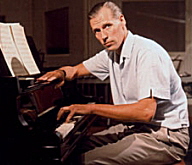 For the next two hours, attention was given to working out and recording vocals for the song. "Everyone agreed that the song was begging for big, lush harmonies,” Geoff Emerick recalls, “just the kind of thing that was George Martin's forte. Delighted to be contributing at last, he spent (considerable time) with John, Paul and George Harrison gathered around the piano while he worked out their complex parts note by note.” John explains: “As for the harmonies, I just asked George Martin, or whoever was 'round, 'What's the alternative to thirds and fifths?' as they're the only ones I know, and he would play them on a piano, and we'd say, 'Oh, we'll have that one.' So, I couldn't tell you what they are, I just know it's harmony.” For the next two hours, attention was given to working out and recording vocals for the song. "Everyone agreed that the song was begging for big, lush harmonies,” Geoff Emerick recalls, “just the kind of thing that was George Martin's forte. Delighted to be contributing at last, he spent (considerable time) with John, Paul and George Harrison gathered around the piano while he worked out their complex parts note by note.” John explains: “As for the harmonies, I just asked George Martin, or whoever was 'round, 'What's the alternative to thirds and fifths?' as they're the only ones I know, and he would play them on a piano, and we'd say, 'Oh, we'll have that one.' So, I couldn't tell you what they are, I just know it's harmony.”
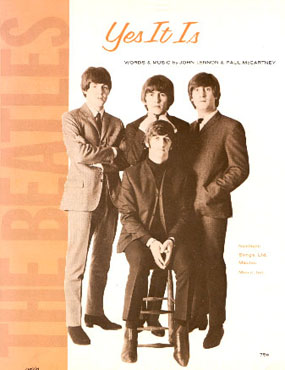 “The only problem was,” Geoff Emerick continues, “that George Martin had worked out nine harmony parts for The Beatles to sing, but we only had five tracks to record them on. That was resolved easily enough when it was decided to have John, Paul and George Harrison sing their three-part harmony together live, instead of overdubbing each part one at a time, and then have them do two additional passes in order to add on the remaining six parts. It was as much an aesthetic as it was a technical decision, because their voices had always meshed so well naturally.” George Harrison recalls, “The harmony was pretty difficult to sing in, you know, we really had to learn it...We've never done something like that for years, since a b-side; (sings) 'If you wear red tonight' and 'This is what I said tonight,'" referring to "Yes It Is," the 1965 b-side to "Ticket To Ride." George Martin relates: "John, Paul and George sang the song in harmony...I was literally telling them what notes to sing." “The only problem was,” Geoff Emerick continues, “that George Martin had worked out nine harmony parts for The Beatles to sing, but we only had five tracks to record them on. That was resolved easily enough when it was decided to have John, Paul and George Harrison sing their three-part harmony together live, instead of overdubbing each part one at a time, and then have them do two additional passes in order to add on the remaining six parts. It was as much an aesthetic as it was a technical decision, because their voices had always meshed so well naturally.” George Harrison recalls, “The harmony was pretty difficult to sing in, you know, we really had to learn it...We've never done something like that for years, since a b-side; (sings) 'If you wear red tonight' and 'This is what I said tonight,'" referring to "Yes It Is," the 1965 b-side to "Ticket To Ride." George Martin relates: "John, Paul and George sang the song in harmony...I was literally telling them what notes to sing."
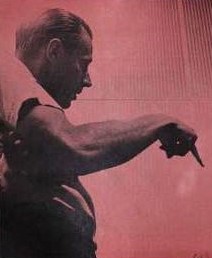 A note of clarification needs to be made here. Geoff Emerick describes what George Martin worked out as "nine harmony parts," but in actuality, it was only three-part harmony. John sang the mid-range lead vocal part, George sang a somewhat lower harmony, and Paul sang a high harmony in falsetto. This was then overdubbed twice more at a later session, "triple-tracking" the same three harmony parts that George Martin worked out for them. This created the lush vocals for the song. A note of clarification needs to be made here. Geoff Emerick describes what George Martin worked out as "nine harmony parts," but in actuality, it was only three-part harmony. John sang the mid-range lead vocal part, George sang a somewhat lower harmony, and Paul sang a high harmony in falsetto. This was then overdubbed twice more at a later session, "triple-tracking" the same three harmony parts that George Martin worked out for them. This created the lush vocals for the song.
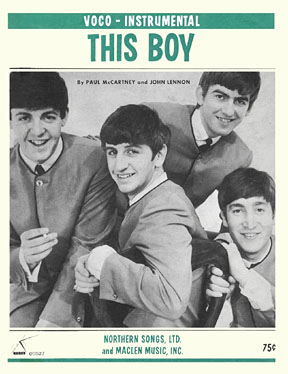 At 10:30 pm, they had recorded the first set of their three-part harmony onto track six of the tape, leaving the other two sets of three-part harmony to be recorded after the weekend was over. With three open tracks still left on the eight-track tape, they called it for the night. However, after the weekend, The Beatles filed back into EMI Studio Two on August 4th, 1969, specifically to add the remaining vocals onto “Because.” They once again arrived around 2:30 pm and set out to reprise their stunning three-part harmony abilities as they had done with 1963's “This Boy” and 1965's “Yes It Is.” At 10:30 pm, they had recorded the first set of their three-part harmony onto track six of the tape, leaving the other two sets of three-part harmony to be recorded after the weekend was over. With three open tracks still left on the eight-track tape, they called it for the night. However, after the weekend, The Beatles filed back into EMI Studio Two on August 4th, 1969, specifically to add the remaining vocals onto “Because.” They once again arrived around 2:30 pm and set out to reprise their stunning three-part harmony abilities as they had done with 1963's “This Boy” and 1965's “Yes It Is.”
 “It was mid-afternoon,” Geoff Emerick recalls, “but the lights in Studio Two were dimmed way down low for atmosphere. The four Beatles – Ringo was there, too, providing moral support – were gathered in a semicircle, the sparse backing track playing softly in their headphones. To start with, everyone was standing up, but it quickly became apparent that this was going to be a time-consuming process, so they were soon sitting on regulation EMI hard-back chairs, not stools. To get the phrasing spot-on, Paul was making hand gestures, conducting the others. It would take more than five hours to get those vocals done, and though John's patience was sorely tried that afternoon, no one gave up. Perfection was the goal, and nobody was prepared to accept anything less.” “It was mid-afternoon,” Geoff Emerick recalls, “but the lights in Studio Two were dimmed way down low for atmosphere. The four Beatles – Ringo was there, too, providing moral support – were gathered in a semicircle, the sparse backing track playing softly in their headphones. To start with, everyone was standing up, but it quickly became apparent that this was going to be a time-consuming process, so they were soon sitting on regulation EMI hard-back chairs, not stools. To get the phrasing spot-on, Paul was making hand gestures, conducting the others. It would take more than five hours to get those vocals done, and though John's patience was sorely tried that afternoon, no one gave up. Perfection was the goal, and nobody was prepared to accept anything less.”
 "George Martin took his place next to me in the control room, listening intently. Yoko was up there with us too, but she never said a word the entire afternoon. John, Paul and George Harrison each had his own mic, but they were all being recorded on a single track, so I was focused on doing the balance. To keep the purity of the sound, I had decided to use no signal processing whatsoever – no compressors or limiters. That meant that I had to manually 'pot' the sound to smooth out the peaks and valleys – moving the faders up and down as it was being recorded – carefully following the dynamics of each word, each syllable. Fortunately, I'd had plenty of time to learn those moves during the long hours of vocal rehearsals." "George Martin took his place next to me in the control room, listening intently. Yoko was up there with us too, but she never said a word the entire afternoon. John, Paul and George Harrison each had his own mic, but they were all being recorded on a single track, so I was focused on doing the balance. To keep the purity of the sound, I had decided to use no signal processing whatsoever – no compressors or limiters. That meant that I had to manually 'pot' the sound to smooth out the peaks and valleys – moving the faders up and down as it was being recorded – carefully following the dynamics of each word, each syllable. Fortunately, I'd had plenty of time to learn those moves during the long hours of vocal rehearsals."
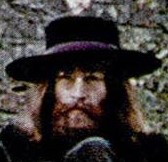 “The three Beatles sang 'Because' over and over and over again that afternoon; they probably did each pass twenty or thirty times. Pitching was not a problem – they rarely sang out of tune, and they were good at remembering their parts – but it wasn't easy to get the phrasing precise, starting and ending each word at exactly the same time. Even John was unusually patient that day, though he rebuked Paul once or twice, at one point snapping, 'Jesus Christ, give me a break already...I wish I hadn't written the bloody thing!'” “The three Beatles sang 'Because' over and over and over again that afternoon; they probably did each pass twenty or thirty times. Pitching was not a problem – they rarely sang out of tune, and they were good at remembering their parts – but it wasn't easy to get the phrasing precise, starting and ending each word at exactly the same time. Even John was unusually patient that day, though he rebuked Paul once or twice, at one point snapping, 'Jesus Christ, give me a break already...I wish I hadn't written the bloody thing!'”
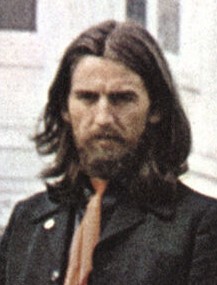 “But John kept at it, as did George Harrison who, to my surprise, never uttered a word of complaint. They knew they were doing something special and they were determined to get it right. There was no clowning around that day, no joking; everyone was very serious, very focused. Their goal was to be able to sing each pass all the way through from start to finish – it was almost a matter of pride – but everyone was starting to get so weary, we ended up having to do a few drop-ins. Actually, we couldn't do too many even if we wanted to, because the breaths between phrases would make any drop-ins apparent.” “But John kept at it, as did George Harrison who, to my surprise, never uttered a word of complaint. They knew they were doing something special and they were determined to get it right. There was no clowning around that day, no joking; everyone was very serious, very focused. Their goal was to be able to sing each pass all the way through from start to finish – it was almost a matter of pride – but everyone was starting to get so weary, we ended up having to do a few drop-ins. Actually, we couldn't do too many even if we wanted to, because the breaths between phrases would make any drop-ins apparent.”
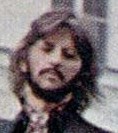 “That day I saw the four Beatles at their finest: there was one hundred percent concentration from all of them – even Ringo, sitting quietly with his eyes closed, silently urging his bandmates on to their best performance – all working in tandem to get that vocal nailed, spot on. It was a stark example of the kind of teamwork that had been so sorely lacking for years. It's tempting to imagine what The Beatles might have been able to accomplish if they could only have captured and sustained that spirit just a little longer.” “That day I saw the four Beatles at their finest: there was one hundred percent concentration from all of them – even Ringo, sitting quietly with his eyes closed, silently urging his bandmates on to their best performance – all working in tandem to get that vocal nailed, spot on. It was a stark example of the kind of teamwork that had been so sorely lacking for years. It's tempting to imagine what The Beatles might have been able to accomplish if they could only have captured and sustained that spirit just a little longer.”
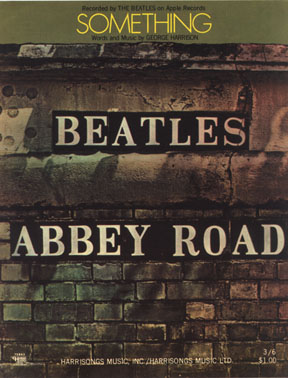 The first set of three-part harmony overdubs on this day was recorded on track seven, the second set being recorded on track eight, which resulted in a total of nine Beatle voices captured on tracks six, seven and eight of the eight-track tape. No stereo mix was made on this day, possibly an indication that they they hadn't decided as of yet what other overdubs the song needed, perhaps still considering a tamboura as John suggested at the previous session. These vocal overdubs were complete as of 7:15 pm, which allowed George Harrison to bring a couple engineers over to the control room of Studio Three to create stereo mixes of his “Abbey Road” tracks, “Something” and “Here Comes The Sun,” for him to analyze in determining if more overdubs were needed for these songs as well. Nonetheless, the remaining Beatles apparently stuck around in Studio Two until 9 pm, undoubtedly listening to the lush nine-part harmonies that they had just worked so hard to create. The first set of three-part harmony overdubs on this day was recorded on track seven, the second set being recorded on track eight, which resulted in a total of nine Beatle voices captured on tracks six, seven and eight of the eight-track tape. No stereo mix was made on this day, possibly an indication that they they hadn't decided as of yet what other overdubs the song needed, perhaps still considering a tamboura as John suggested at the previous session. These vocal overdubs were complete as of 7:15 pm, which allowed George Harrison to bring a couple engineers over to the control room of Studio Three to create stereo mixes of his “Abbey Road” tracks, “Something” and “Here Comes The Sun,” for him to analyze in determining if more overdubs were needed for these songs as well. Nonetheless, the remaining Beatles apparently stuck around in Studio Two until 9 pm, undoubtedly listening to the lush nine-part harmonies that they had just worked so hard to create.
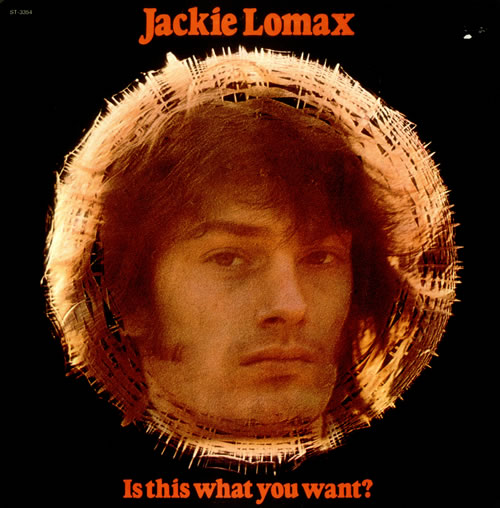 A decision was made to complete “Because” with an overdub of an unusual new instrument that George Harrison had recently acquired. In November of 1968, while George was producing the Jackie Lomax album “Is This What You Want?” in Los Angeles, California, he purchased a Moog synthesizer, model IIIp. Undoubtedly because of the “no overdubs” policy that permeated the “Get Back / Let It Be” sessions of January 1969, it was not used at all during those recordings. But now, in early August of that year, according to the book “The Beatles Recording Sessions,” “George had his Moog transported into EMI for the 'Abbey Road' sessions and with Mike Vickers (formerly of the British group Manfred Mann) recruited as expert consultant / programmer, The Beatles began to make constructive use of the instrument in the closing weeks of the 'Abbey Road' sessions.” A decision was made to complete “Because” with an overdub of an unusual new instrument that George Harrison had recently acquired. In November of 1968, while George was producing the Jackie Lomax album “Is This What You Want?” in Los Angeles, California, he purchased a Moog synthesizer, model IIIp. Undoubtedly because of the “no overdubs” policy that permeated the “Get Back / Let It Be” sessions of January 1969, it was not used at all during those recordings. But now, in early August of that year, according to the book “The Beatles Recording Sessions,” “George had his Moog transported into EMI for the 'Abbey Road' sessions and with Mike Vickers (formerly of the British group Manfred Mann) recruited as expert consultant / programmer, The Beatles began to make constructive use of the instrument in the closing weeks of the 'Abbey Road' sessions.”
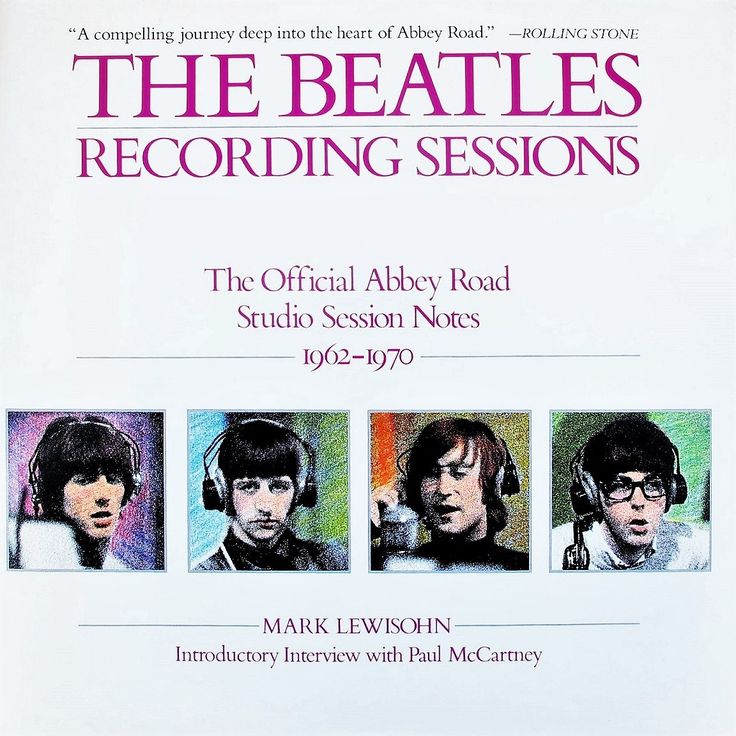 Engineer John Kurlander, as interviewed for the above mentioned "Recording Sessions" book, explains that “the Moog was set up in Room 43 and the sound was fed from there by a mono cable to whichever control room we were in. All four Beatles – but especially George – expressed great interest in it, trying out different things.” Engineer Nick Webb recalls: “I think The Beatles used the Moog with great subtlety. Others in a similar situation would probably have gone completely over the top with it. It's there, on the record, but not obtrusively. Perhaps they weren't sure it was going to catch on.” In September of 1969, John explained in a Radio Luxembourg interview: "The Moog plays the solo in 'Because.' You can make it play anything. Any style...freaky or just plain. It sounds like trumpets and things if you want it to." EMI engineer Ken Townsend recalled, "to get that French horn sound took a whole set of flight cases full of jack plugs and filters." Engineer Alan Parsons concurs: "It was a lot of work to get anything out of it and you could only sound one note at a time, which was a disadvantage. Everybody was fascinated by it. We were all crowding around to have a look." Engineer John Kurlander, as interviewed for the above mentioned "Recording Sessions" book, explains that “the Moog was set up in Room 43 and the sound was fed from there by a mono cable to whichever control room we were in. All four Beatles – but especially George – expressed great interest in it, trying out different things.” Engineer Nick Webb recalls: “I think The Beatles used the Moog with great subtlety. Others in a similar situation would probably have gone completely over the top with it. It's there, on the record, but not obtrusively. Perhaps they weren't sure it was going to catch on.” In September of 1969, John explained in a Radio Luxembourg interview: "The Moog plays the solo in 'Because.' You can make it play anything. Any style...freaky or just plain. It sounds like trumpets and things if you want it to." EMI engineer Ken Townsend recalled, "to get that French horn sound took a whole set of flight cases full of jack plugs and filters." Engineer Alan Parsons concurs: "It was a lot of work to get anything out of it and you could only sound one note at a time, which was a disadvantage. Everybody was fascinated by it. We were all crowding around to have a look."
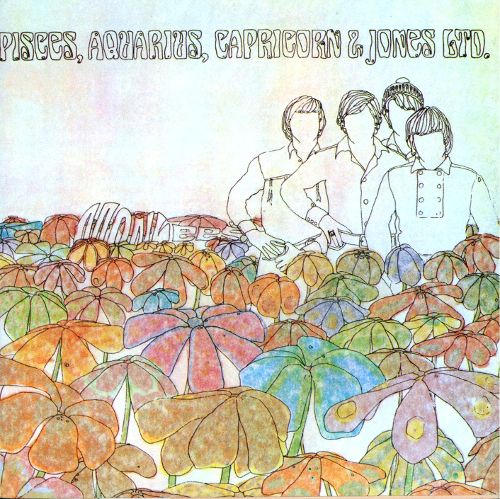 The Beatles were not the first to use a Moog synthesizer on a released record. Earlier examples of albums that contain the instrument are: "The Zodiac: Cosmic Sounds" (released May 1967), "Strange Days" by The Doors (released September 1967), "Pieces, Aquarius, Capricorn & Jones, Ltd" by The Monkees (released November 1967), "The Notorious Byrd Brothers" by The Byrds (released January 1968) and "Switched-On Bach" by Walter "Wendy" Carlos (released October 1968). The Beatles were not the first to use a Moog synthesizer on a released record. Earlier examples of albums that contain the instrument are: "The Zodiac: Cosmic Sounds" (released May 1967), "Strange Days" by The Doors (released September 1967), "Pieces, Aquarius, Capricorn & Jones, Ltd" by The Monkees (released November 1967), "The Notorious Byrd Brothers" by The Byrds (released January 1968) and "Switched-On Bach" by Walter "Wendy" Carlos (released October 1968).
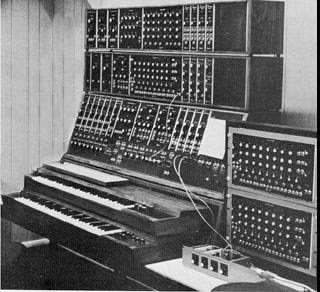 At any rate, the song “Because” was the first Beatles track that featured this ground-breaking instrument, "Maxwell's Silver Hammer" and "Here Comes The Sun" receiving Moog overdubs within the next two weeks. George Harrison filled both tracks two and four with Moog synthesizer overdubs on the session that occurred the following day, August 5th, 1969 in EMI Studio Two. John's guitar from the rhythm track was first bounced from track two to track five, while Ringo's hand claps on track four were recorded over, these not being necessary for the finished recording. At a session that began at 6:30 pm on that day, George played the synthesizer that was set up in Room 43, this performance being fed into Studio Two, overdubbing a melody line that mimicked the vocal line of the song and then following suit once again, thus filling all eight-tracks of the eight-track tape. This took approximately three hours to perfect, following which was a vocal overdub onto the song “The End,” this ending the session at 10:45 pm. With this complete, the recording of “Because” was done. At any rate, the song “Because” was the first Beatles track that featured this ground-breaking instrument, "Maxwell's Silver Hammer" and "Here Comes The Sun" receiving Moog overdubs within the next two weeks. George Harrison filled both tracks two and four with Moog synthesizer overdubs on the session that occurred the following day, August 5th, 1969 in EMI Studio Two. John's guitar from the rhythm track was first bounced from track two to track five, while Ringo's hand claps on track four were recorded over, these not being necessary for the finished recording. At a session that began at 6:30 pm on that day, George played the synthesizer that was set up in Room 43, this performance being fed into Studio Two, overdubbing a melody line that mimicked the vocal line of the song and then following suit once again, thus filling all eight-tracks of the eight-track tape. This took approximately three hours to perfect, following which was a vocal overdub onto the song “The End,” this ending the session at 10:45 pm. With this complete, the recording of “Because” was done.
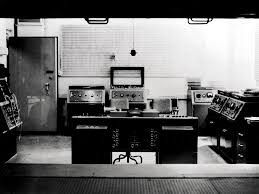 All that was left was to create the stereo mix of the song. This occurred on August 12th, 1969 in the control room of EMI Studio Two starting at 7 pm, the mix being made by producer George Martin and engineers Geoff Emerick, Phil McDonald and John Kurlander. Geoff Emerick recalls: “I was so enarmored of the sonic results of not using compressors or limiters that I even decided to mix the entire track without them. That was a first for any record I'd ever made; in fact, it was quite probably a first for any major pop recording done since the cumbersome devices were introduced in the early fifties. Yet every word, every syllable is crystal clear on the final mix, due to the time and effort we all expended on getting the song recorded right in the first place.” Two stereo mixes were attempted, the second undoubtedly being the better of the two. With two other “Abbey Road” tracks being mixed also on this day, these being “Oh! Darling” and “Maxwell's Silver Hammer,” this mixing session was complete as of 2 am the following morning. All that was left was to create the stereo mix of the song. This occurred on August 12th, 1969 in the control room of EMI Studio Two starting at 7 pm, the mix being made by producer George Martin and engineers Geoff Emerick, Phil McDonald and John Kurlander. Geoff Emerick recalls: “I was so enarmored of the sonic results of not using compressors or limiters that I even decided to mix the entire track without them. That was a first for any record I'd ever made; in fact, it was quite probably a first for any major pop recording done since the cumbersome devices were introduced in the early fifties. Yet every word, every syllable is crystal clear on the final mix, due to the time and effort we all expended on getting the song recorded right in the first place.” Two stereo mixes were attempted, the second undoubtedly being the better of the two. With two other “Abbey Road” tracks being mixed also on this day, these being “Oh! Darling” and “Maxwell's Silver Hammer,” this mixing session was complete as of 2 am the following morning.
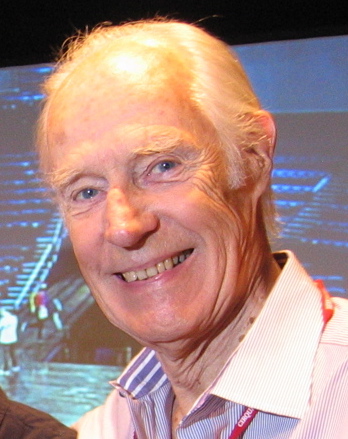 George Martin was so proud of the vocal work done on this song that, sometime in 1996 in preparation for the release of the “Anthology 3” album, he and Geoff Emerick returned to the master tape of “Because” to mix and then officially release an a cappella version of the song, something that had been available on bootleg releases for many years. Omitting a bit of the open space between vocal lines, and with added reverb, this version was a definite highlight of this successful compilation album. George Martin was so proud of the vocal work done on this song that, sometime in 1996 in preparation for the release of the “Anthology 3” album, he and Geoff Emerick returned to the master tape of “Because” to mix and then officially release an a cappella version of the song, something that had been available on bootleg releases for many years. Omitting a bit of the open space between vocal lines, and with added reverb, this version was a definite highlight of this successful compilation album.
 A similar a cappella mix was made by George Martin and his son Giles Martin sometime between 2004 and 2006 for inclusion as the opening track on the 2006 compilation album “Love,” bird sounds from various sources being added in for effect. These sources include the “World Wildlife Fund” version of the song “Across The Universe,” the recording of the 1995 Beatles song “Free As A Bird,” and a wood pigeon “to make it sound more British,” according to George Martin. This interesting mix was also used as the opening sequence in the similarly titled Cirque du Soleil show, which had become a mainstay in Las Vegas. A similar a cappella mix was made by George Martin and his son Giles Martin sometime between 2004 and 2006 for inclusion as the opening track on the 2006 compilation album “Love,” bird sounds from various sources being added in for effect. These sources include the “World Wildlife Fund” version of the song “Across The Universe,” the recording of the 1995 Beatles song “Free As A Bird,” and a wood pigeon “to make it sound more British,” according to George Martin. This interesting mix was also used as the opening sequence in the similarly titled Cirque du Soleil show, which had become a mainstay in Las Vegas.
 Sometime in 2019, Giles Martin, along with engineer Sam Okell, created a new stereo mix of "Because" for inclusion in the various 50th Anniversary releases of "Abbey Road." While they were at it, they created a stereo mix of the instrumental "take one" rhythm track as recorded on August 1st, 1969, complete with Ringo's hand claps and studio banter afterward. Sometime in 2019, Giles Martin, along with engineer Sam Okell, created a new stereo mix of "Because" for inclusion in the various 50th Anniversary releases of "Abbey Road." While they were at it, they created a stereo mix of the instrumental "take one" rhythm track as recorded on August 1st, 1969, complete with Ringo's hand claps and studio banter afterward.
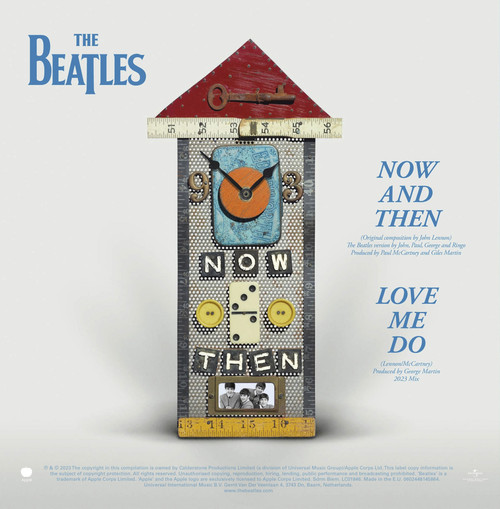 Giles Martin was also involved, along with Paul, in inserting a bit of the backing harmonies used in the original sessions of "Because" into the last Beatles song "Now And Then," this occuring sometime in the later half of 2023. Giles Martin had written a score for strings to be added to the recording of a newly written instrumental section of "Now And Then" that would specifically accommodate harmonies sung by John, Paul and George in "Because." The insertion of these harmonies was accomplished at Abbey Road Studios by Giles Martin using the same methods he utilized in making the "Love" album detailed above, "Now And Then" being produced by Paul McCartney and Giles Martin (with Jeff Lynne as additional producer because of his work with the song in 1995) and mixed by Spike Stent. Giles Martin was also involved, along with Paul, in inserting a bit of the backing harmonies used in the original sessions of "Because" into the last Beatles song "Now And Then," this occuring sometime in the later half of 2023. Giles Martin had written a score for strings to be added to the recording of a newly written instrumental section of "Now And Then" that would specifically accommodate harmonies sung by John, Paul and George in "Because." The insertion of these harmonies was accomplished at Abbey Road Studios by Giles Martin using the same methods he utilized in making the "Love" album detailed above, "Now And Then" being produced by Paul McCartney and Giles Martin (with Jeff Lynne as additional producer because of his work with the song in 1995) and mixed by Spike Stent.
Song Structure and Style
The structure of "Because" consists of 'verse (introduction)/ verse/ verse/ bridge/ verse/ verse (conclusion)' (or aaabaa). Each verse is ten measures in length and the bridge is four measure in length, all measures being in 4/4 time.
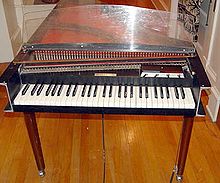 The first instrumental verse comprises the first four measures being played exclusively by George Martin on harpsichord and then joined by John on electric guitar for the next four measures. After a pause at the end of measure eight, measures nine and ten add in Paul on bass and the nine voices of harmony singing “aah,” which pauses once again midway through the tenth measure. The first instrumental verse comprises the first four measures being played exclusively by George Martin on harpsichord and then joined by John on electric guitar for the next four measures. After a pause at the end of measure eight, measures nine and ten add in Paul on bass and the nine voices of harmony singing “aah,” which pauses once again midway through the tenth measure.
 The second verse, which is the first vocal verse, continues the ten measure pattern exactly as in the first instrumental verse but with bass and vocal harmonies throughout. Paul sings the highest harmony which allows him to have some leeway in expressiveness in measures three and seven. The third verse then follows, using the exact same instrumentation throughout, Paul subduing his high-toned vocalizing in the seventh measure this time around. At the end of this third verse, the phrase “love is old, love is...” precedes the bridge that follows. The second verse, which is the first vocal verse, continues the ten measure pattern exactly as in the first instrumental verse but with bass and vocal harmonies throughout. Paul sings the highest harmony which allows him to have some leeway in expressiveness in measures three and seven. The third verse then follows, using the exact same instrumentation throughout, Paul subduing his high-toned vocalizing in the seventh measure this time around. At the end of this third verse, the phrase “love is old, love is...” precedes the bridge that follows.
The four measure bridge brings the song into a major key and introduces George Harrison's Moog synthesizer overdub which precisely mimics the harpsichord / guitar pattern that is played. The fourth measure concludes with another pause that is filled with the beginnings of the first vocal line of the fourth verse.
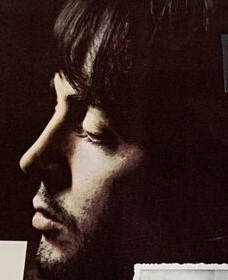 The fourth verse is a virtual repeat of the second verse, complete with Paul's high-toned expressiveness in the seventh measure. One difference here is that there is no pause in the tenth measure this time around, the vocalists extending the “aah” from the tenth measure into the first measure of the sixth verse that follows. The fourth verse is a virtual repeat of the second verse, complete with Paul's high-toned expressiveness in the seventh measure. One difference here is that there is no pause in the tenth measure this time around, the vocalists extending the “aah” from the tenth measure into the first measure of the sixth verse that follows.
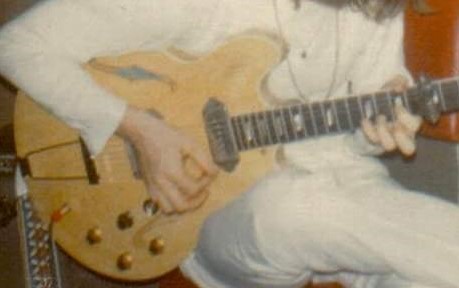 The fifth concluding verse then follows, which is entirely instrumental except for the nine-part harmonies singing “aah” in measures three through five, seven through eight, and then nine and ten. George Harrison comes in once again on Moog in measures one through three, five through seven, and then nine and ten with a melody line that mimics the vocal lines of the previous verses. Measure ten then hangs in the air in anticipation of the song that follows with all instruments fading away appropriately. The fifth concluding verse then follows, which is entirely instrumental except for the nine-part harmonies singing “aah” in measures three through five, seven through eight, and then nine and ten. George Harrison comes in once again on Moog in measures one through three, five through seven, and then nine and ten with a melody line that mimics the vocal lines of the previous verses. Measure ten then hangs in the air in anticipation of the song that follows with all instruments fading away appropriately.
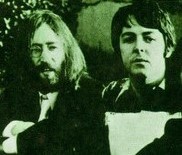 Painstaking effort was contributed by all four instrumentalists and vocalists throughout, much time and effort being expended in order to achieve the desired results. John's final “Lennon / McCartney” contribution was given the attention it deserved, it being known by all involved that this would be the final touch to The Beatles' highly respected career. Painstaking effort was contributed by all four instrumentalists and vocalists throughout, much time and effort being expended in order to achieve the desired results. John's final “Lennon / McCartney” contribution was given the attention it deserved, it being known by all involved that this would be the final touch to The Beatles' highly respected career.
American Releases
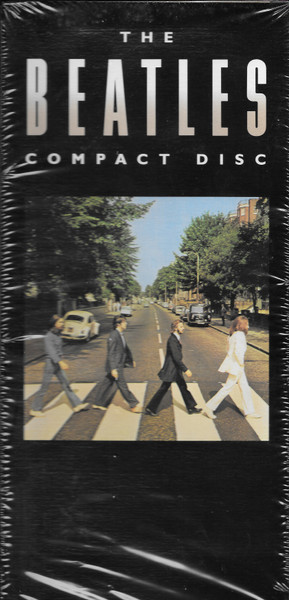 On October 1st, 1969, the final recorded Beatles album was released in America, simply titled "Abbey Road." "Because," which was the last new song contributed for the album, found its place as the second song on side two. With its classical-sounding minor key introduction on harpsichord, this song provided a nice contrast after the satisfying acoustic guitar major key conclusion of "Here Comes The Sun" which precedes it. The "Abbey Road" album took only three weeks to jump into the top spot on the Billboard album chart, raking in a total of eleven weeks in the #1 position. The album first appeared on compact disc on October 10th, 1987, and then as a remastered release on September 9th, 2009. On September 27th, 2019, a 180-gram vinyl and CD release came out for the album's 50th Anniversary. On October 10th, 2025, an opaque green vinyl edition of the album came out as an exclusive release available only at Target Department Stores. On October 1st, 1969, the final recorded Beatles album was released in America, simply titled "Abbey Road." "Because," which was the last new song contributed for the album, found its place as the second song on side two. With its classical-sounding minor key introduction on harpsichord, this song provided a nice contrast after the satisfying acoustic guitar major key conclusion of "Here Comes The Sun" which precedes it. The "Abbey Road" album took only three weeks to jump into the top spot on the Billboard album chart, raking in a total of eleven weeks in the #1 position. The album first appeared on compact disc on October 10th, 1987, and then as a remastered release on September 9th, 2009. On September 27th, 2019, a 180-gram vinyl and CD release came out for the album's 50th Anniversary. On October 10th, 2025, an opaque green vinyl edition of the album came out as an exclusive release available only at Target Department Stores.
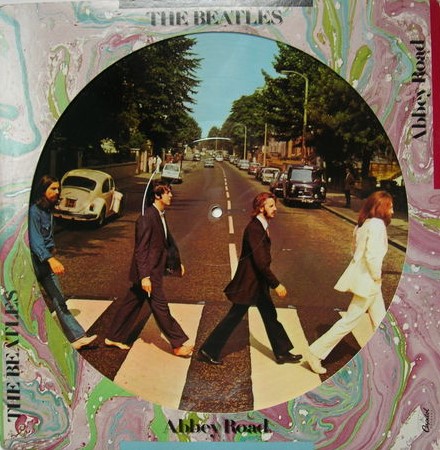 Sometime in 1978, Capitol re-released the “Abbey Road” album as a picture disc. Side one had the iconic front cover while side two contained a close-up of the wall photo of the back cover minus the song title listings. This release quickly went out of print, but was re-released on 180-gram vinyl for the album's 50th Anniversary. Sometime in 1978, Capitol re-released the “Abbey Road” album as a picture disc. Side one had the iconic front cover while side two contained a close-up of the wall photo of the back cover minus the song title listings. This release quickly went out of print, but was re-released on 180-gram vinyl for the album's 50th Anniversary.
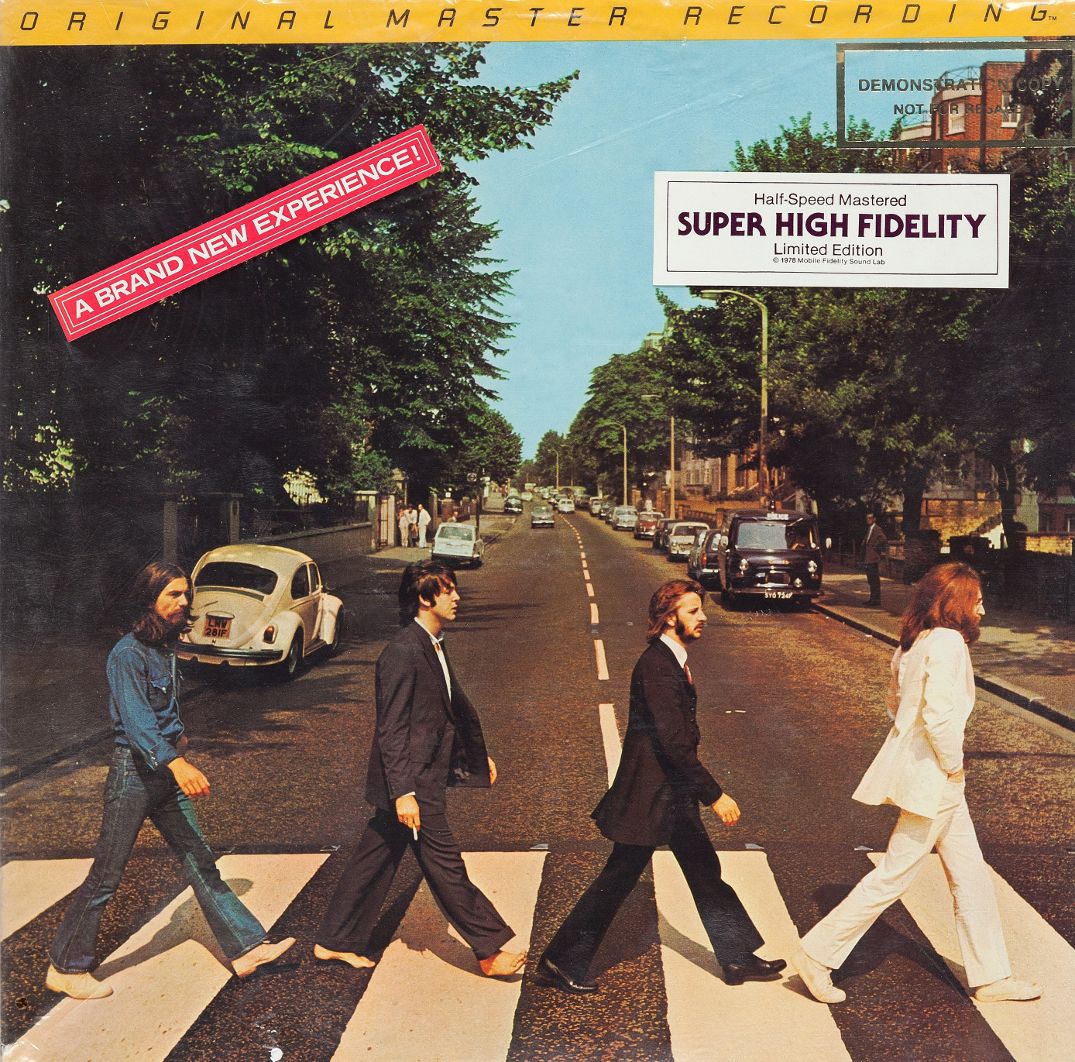 An interesting US vinyl edition of “Abbey Road” was released on December 28th, 1979, this being manufactured by Mobile Fidelity Sound Lab in Chatsworth, California as the first Beatles installment in their "Original Master Recording" series. Their practice was to prepare a new master utilizing half-speed mastering technology from the original master tapes, in this case using the leased sub-master from Capitol Records. Stickers on the shrinkwrap proclaimed this album as being “A Brand New Experience,” which proved to be the case. This version of the album sounded superior to all previous British and American pressings at that time. Unfortunately, this excellent edition of “Abbey Road” was only available for a short time and is quite collectible today. An interesting US vinyl edition of “Abbey Road” was released on December 28th, 1979, this being manufactured by Mobile Fidelity Sound Lab in Chatsworth, California as the first Beatles installment in their "Original Master Recording" series. Their practice was to prepare a new master utilizing half-speed mastering technology from the original master tapes, in this case using the leased sub-master from Capitol Records. Stickers on the shrinkwrap proclaimed this album as being “A Brand New Experience,” which proved to be the case. This version of the album sounded superior to all previous British and American pressings at that time. Unfortunately, this excellent edition of “Abbey Road” was only available for a short time and is quite collectible today.
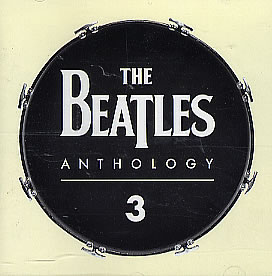 The above mentioned a cappella rendition of “Because” that was created by George Martin and Geoff Emerick was contained on the compilation set “Anthology 3,” which was released on October 28th, 1996. This album went 3x Platinum in the US and hit #1 on the Billboard album chart. Also, this rendition of "Because" was one of five tracks chosen to grace the CD sampler that accompanied this compilation set, distributed to radio stations and quite difficult to acquire today. The above mentioned a cappella rendition of “Because” that was created by George Martin and Geoff Emerick was contained on the compilation set “Anthology 3,” which was released on October 28th, 1996. This album went 3x Platinum in the US and hit #1 on the Billboard album chart. Also, this rendition of "Because" was one of five tracks chosen to grace the CD sampler that accompanied this compilation set, distributed to radio stations and quite difficult to acquire today.
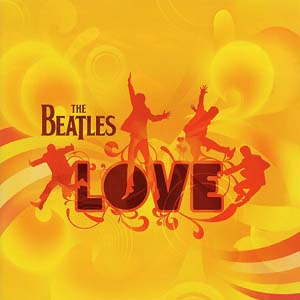 November 20th, 2006 was the release date for the above mentioned George and Giles Martin mix of the song on the album “Love,” which was put together exclusively for the Cirque du Soleil show of the same name per arrangements made by the late George Harrison. This successful album peaked at #4 on the Billboard album chart. November 20th, 2006 was the release date for the above mentioned George and Giles Martin mix of the song on the album “Love,” which was put together exclusively for the Cirque du Soleil show of the same name per arrangements made by the late George Harrison. This successful album peaked at #4 on the Billboard album chart.
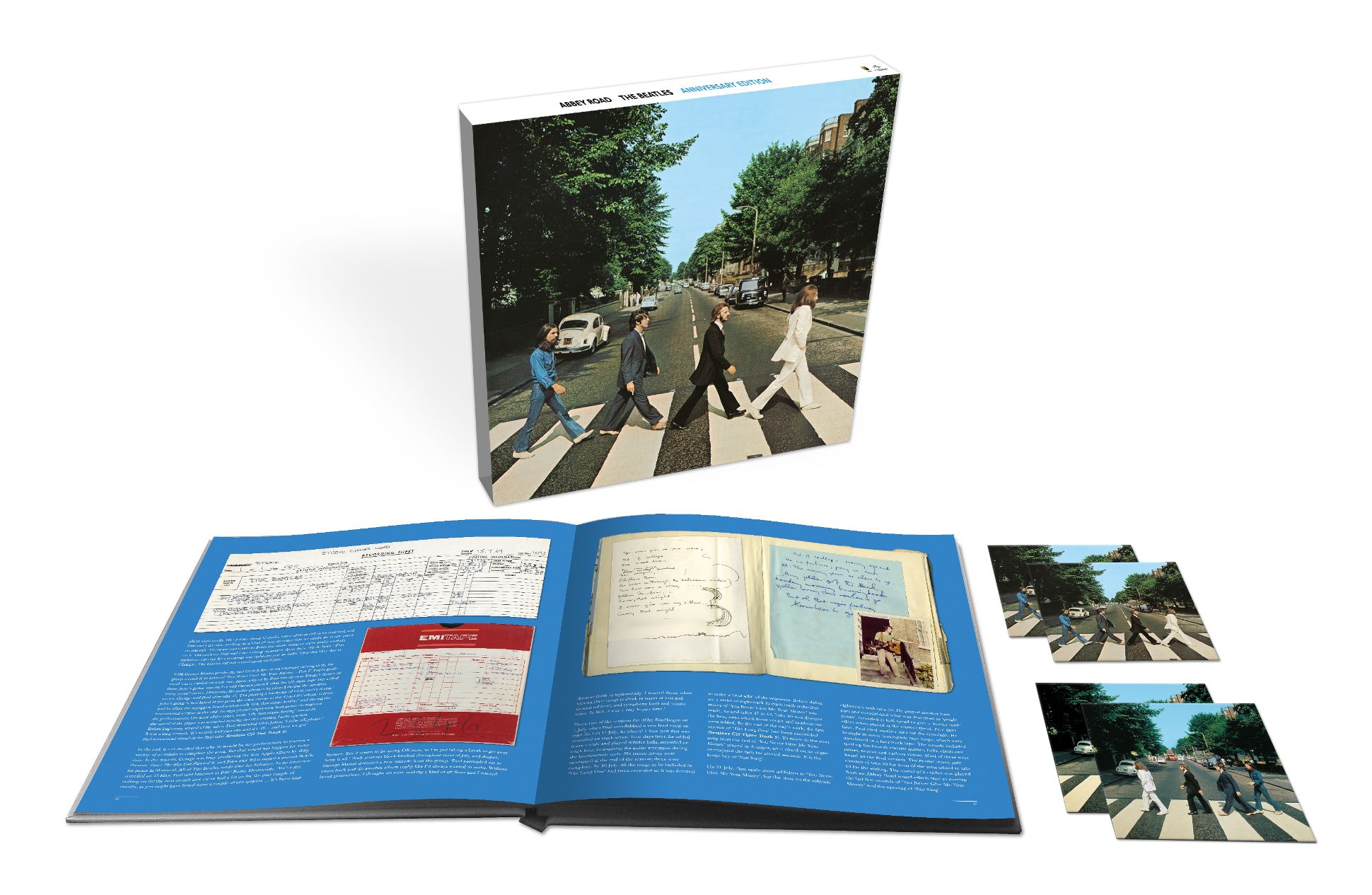 On September 27th, 2019, various editions of "Abbey Road" were released to commemorate its 50th Anniversary that featured interesting versions of "Because." The Deluxe 2CD set, the "Triple Album" vinyl set, and the "Super Deluxe" 3CD + Blu-ray edition, all contain the newly created Giles Martin mix of the entire album as well as the never-before-heard "Take one" of the instrumental rhythm track as recorded on August 1st, 1969. On September 27th, 2019, various editions of "Abbey Road" were released to commemorate its 50th Anniversary that featured interesting versions of "Because." The Deluxe 2CD set, the "Triple Album" vinyl set, and the "Super Deluxe" 3CD + Blu-ray edition, all contain the newly created Giles Martin mix of the entire album as well as the never-before-heard "Take one" of the instrumental rhythm track as recorded on August 1st, 1969.
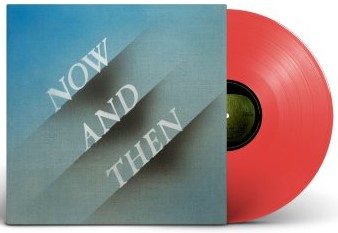 As detailed above, vocal harmonies from "Because" were inserted into the last Beatles song "Now And Then," this single being released on November 2nd, 2023 and its inclusion on the newly mixed album "The Beatles / 1967 - 1970" (aka "The Blue Album") being released on November 10th, 2023. As detailed above, vocal harmonies from "Because" were inserted into the last Beatles song "Now And Then," this single being released on November 2nd, 2023 and its inclusion on the newly mixed album "The Beatles / 1967 - 1970" (aka "The Blue Album") being released on November 10th, 2023.
Live Performances
After the song was recorded, the individual Beatles were barely speaking to each other let alone giving live performances anywhere together. Therefore, “Because” was never performed by the group live, nor did any individual group member ever think to include the song in any live set list.
Conclusion
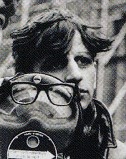 Concerning Beethoven being the primary inspiration behind the song "Because," some would say that The Beatles have had a peripheral connection to Classical music, and even to Beethoven in particular, since as early as 1963. Apart from them recording "Roll Over Beethoven" in that year, the group was habitually asked in interviews and press conferences, "What do you think of Beethoven?" Ringo would answer this question with the statement, "I love him...especially his poems!" Concerning Beethoven being the primary inspiration behind the song "Because," some would say that The Beatles have had a peripheral connection to Classical music, and even to Beethoven in particular, since as early as 1963. Apart from them recording "Roll Over Beethoven" in that year, the group was habitually asked in interviews and press conferences, "What do you think of Beethoven?" Ringo would answer this question with the statement, "I love him...especially his poems!"
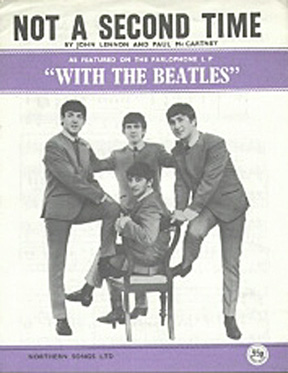 Comparisons have even been made between The Beatles' music and that of other classical composers. Music critic William Mann wrote a notable article in the London Times comparing the John Lennon-penned song “Not A Second Time” to Gustav Mahler's “Song Of The Earth,” starting what John called “the whole intellectual bit about The Beatles.” Then in 1968, shortly after the “White Album” was released, critic Tony Palmer wrote in the London Observer that The Beatles were “the greatest songwriters since Schubert.” Comparisons have even been made between The Beatles' music and that of other classical composers. Music critic William Mann wrote a notable article in the London Times comparing the John Lennon-penned song “Not A Second Time” to Gustav Mahler's “Song Of The Earth,” starting what John called “the whole intellectual bit about The Beatles.” Then in 1968, shortly after the “White Album” was released, critic Tony Palmer wrote in the London Observer that The Beatles were “the greatest songwriters since Schubert.”
 Nonetheless, the presence of “Because” on the “Abbey Road” album, a release that most view as one of The Beatles finest achievements, adds a great deal of sophistication to their later catalog. While the majority of listeners and fans probably view this song as a pleasant segue between the pop classic “Here Comes The Sun” and the extravagant “Abbey Road Medley” that follows it, The Beatles themselves viewed it in even higher esteem. “I like John's 'Because' on the second side,” Paul remarked in 1969, while George explained: “Paul usually writes the sweeter tunes and John writes more the rave-up things or the freakier things, but you can't deny it. 'Because' is one of the most beautiful tunes. I think this is possibly my favorite one on the album, because it's so simple....This is the tune that really affects people. Straight people and all the music people will dig it. It's really good.” Nonetheless, the presence of “Because” on the “Abbey Road” album, a release that most view as one of The Beatles finest achievements, adds a great deal of sophistication to their later catalog. While the majority of listeners and fans probably view this song as a pleasant segue between the pop classic “Here Comes The Sun” and the extravagant “Abbey Road Medley” that follows it, The Beatles themselves viewed it in even higher esteem. “I like John's 'Because' on the second side,” Paul remarked in 1969, while George explained: “Paul usually writes the sweeter tunes and John writes more the rave-up things or the freakier things, but you can't deny it. 'Because' is one of the most beautiful tunes. I think this is possibly my favorite one on the album, because it's so simple....This is the tune that really affects people. Straight people and all the music people will dig it. It's really good.”
Song Summary
“Because”
Written by: John Lennon / Paul McCartney
- Song Written: March, 1969
- Song Recorded: August 1, 4 & 5, 1969
- First US Release Date: October 1, 1969
- First US Album Release: Apple #SO-383 “Abbey Road”
- British Album Release: Apple #PCS 7088 “Abbey Road”
- US Single Release: n/a
- Highest Chart Position: n/a
- Length: 2:45
- Key: C# minor
- Producer: George Martin
- Engineers: Geoff Emerick, Phil McDonald, John Kurlander
Instrumentation (most likely):
- John Lennon - Lead Vocals, Rhythm Guitar (1965 Epiphone ES- 230TD Casino)
- Paul McCartney - Bass (1964 Rickenbacker 4001 S ), harmony vocals (high)
- George Harrison - Synthesizer (1967 Moog IIIp), harmony vocals (low)
- George Martin - Electric Harpsichord (Baldwin Combo CW-8-S)
Written and compiled by Dave Rybaczewski
|
IF YOU WOULD LIKE TO MAKE A DONATION TO KEEP THIS WEBSITE UP AND RUNNING, PLEASE CLICK BELOW!
Sign Up Below for our MONTHLY BEATLES TRIVIA QUIZ!
|